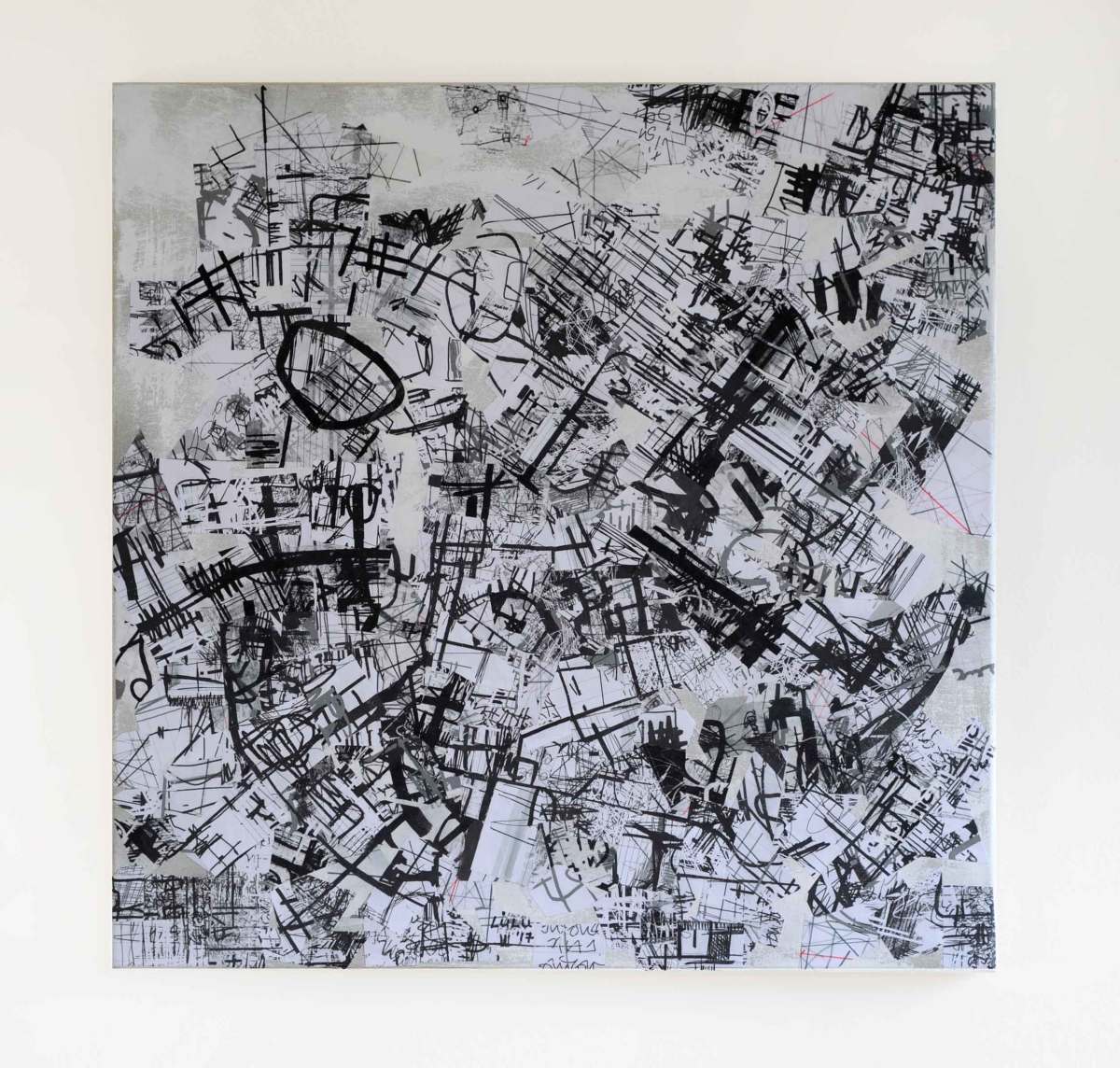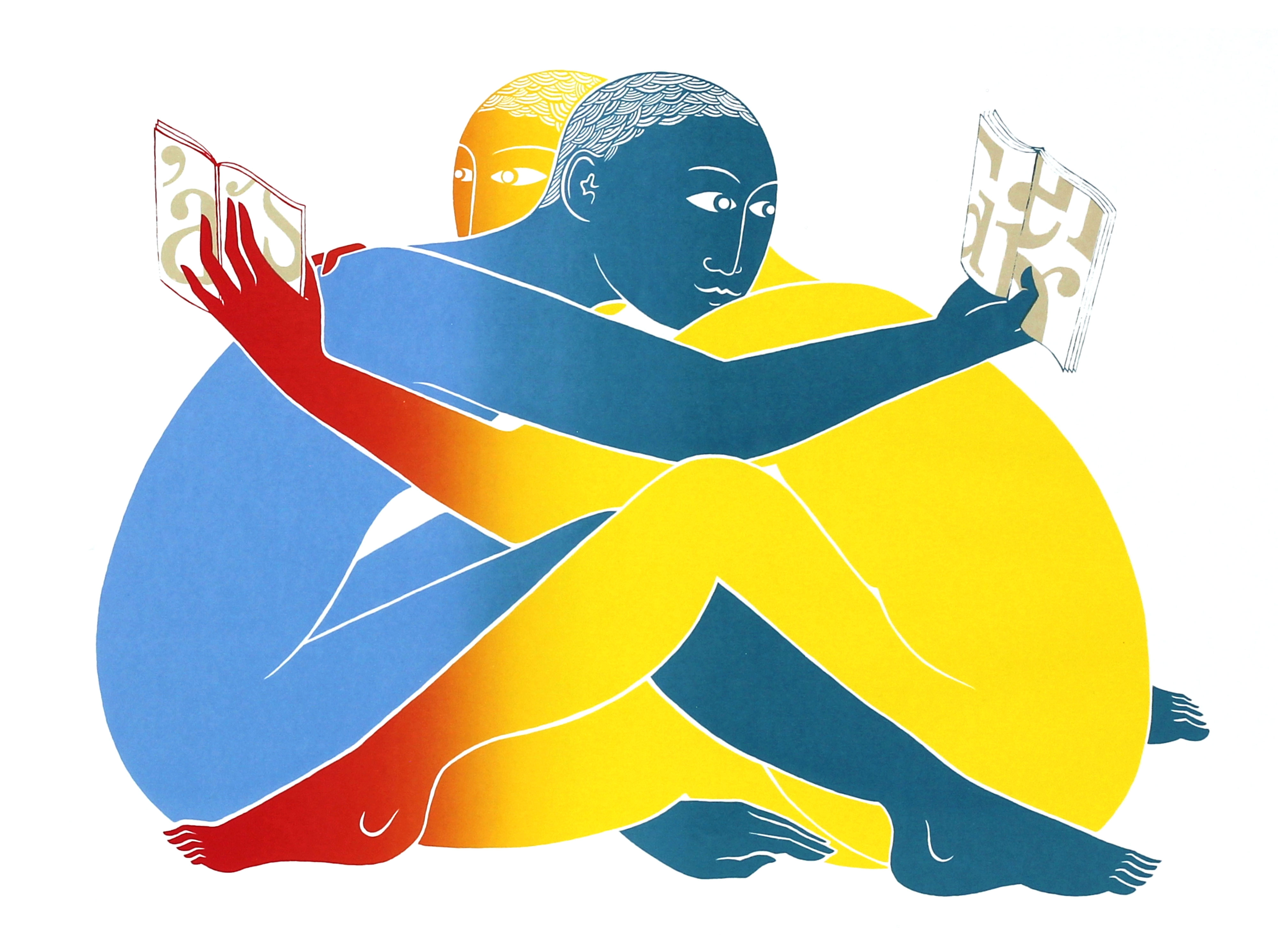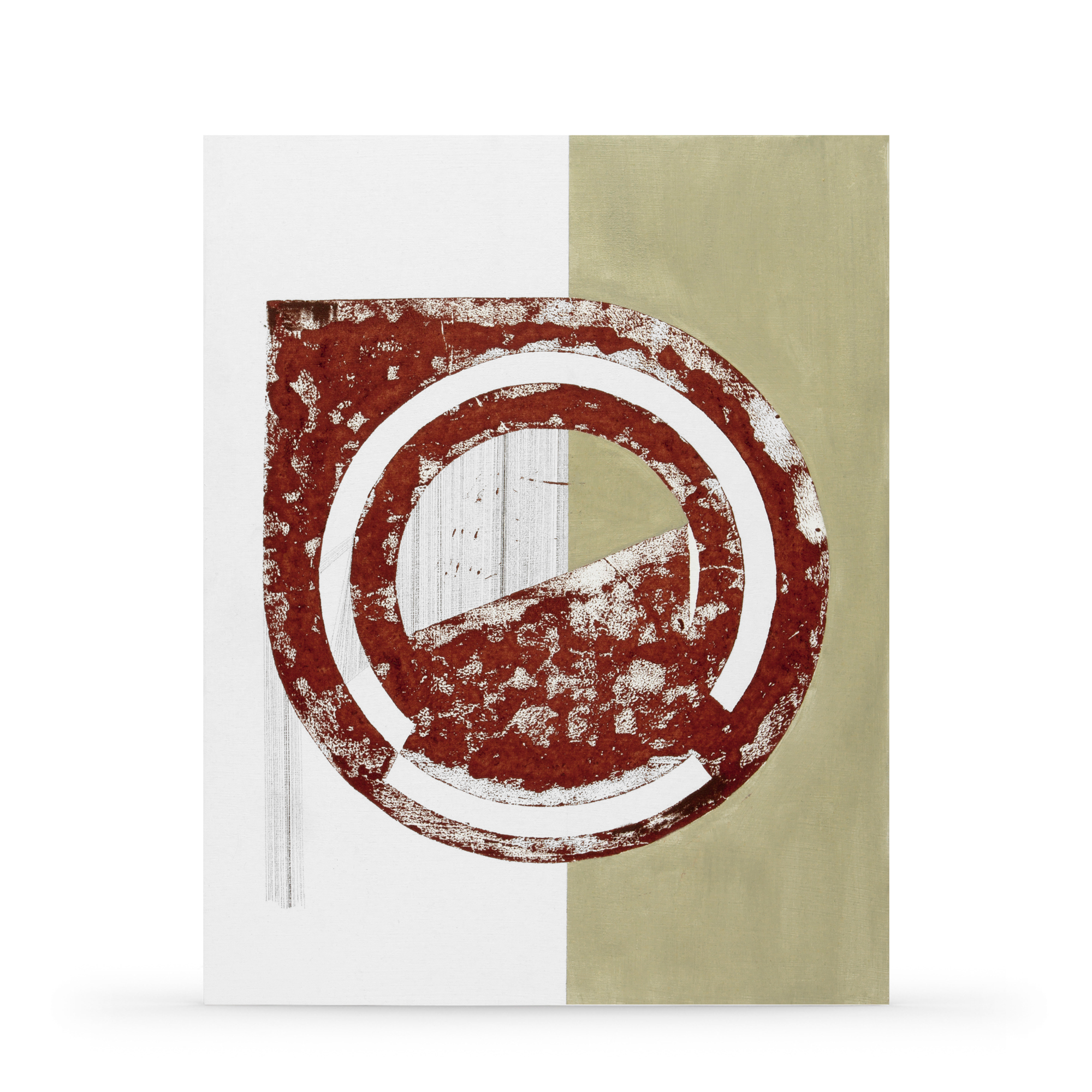This month’s selection of 10 exhibitions to see in UK includes several shows that are curated around works inspired by or thematically related to famous cultural figures, alongside this are several notable solo shows that demonstrate the depth of each artist’s work and process as well as their greater cultural significance.
Reflections: Van Eyck and the Pre-Raphaelites
![The Arnolfini Portrait, Jan van Eyck, 1434, Oil on oak panel of 3 vertical boards, 82.2 cm × 60 cm (32.4 in × 23.6 in)]()
The Arnolfini Portrait, Jan van Eyck, 1434, Oil on oak panel of 3 vertical boards, 82.2 cm × 60 cm (32.4 in × 23.6 in)
Even today Jan van Eyck’s ‘The Arnolfini Portrait’ is well known by the general public and continues to inspire artists, writers and historians. This exhibition looks at how four centuries after it was first painted, it inspired the Pre-Raphaelite Brotherhood and stimulated them to create a new, radical style of painting. Works by the Brotherhood, which included John Everett Millais, Dante Gabriel Rossetti, and William Holman Hunt, focus on legends, real-life muses, the possibilities of reflections on mirrors and indulgent, decadent details and trappings.
The whole show is an interesting view of the obsession through the ages of the thematic link between romantic narratives and gorgeous, intricate surprises, embellishments and backgrounds.
This exhibition was organized by the National Gallery in collaboration with Tate Britain.
Showing at the National Gallery, London until 2nd April 2018.
Journeys with The Waste Land
![The Shore, 1923 (oil on canvas), Nash, Paul (1889-1946) : Leeds Museums and Galleries (Leeds Art Gallery) U.K. : Bridgeman Images]()
The Shore, 1923 (oil on canvas), Nash, Paul (1889-1946) : Leeds Museums and Galleries (Leeds Art Gallery) U.K. : Bridgeman Images
“On Margate Sands.
I can Connect
Nothing with nothing.”
-T.S. Eliot, The Waste Land
T.S. Eliot’s poem The Waste Land has inspired and influenced visual art since it was written. Journeys with The Waste Land looks at how over 60 artists and nearly 100 works can be seen in conjunction or reference to the themes of The Waste Land. Including work by Banner, Cecil Collins, Tacita Dean, Elisabeth Frink, Patrick Heron, Edward Hopper, Barbara Kruger, Helen Marten, Henry Moore, Paul Nash, Paula Rego, John Smith and JMW Turner, there is more than enough to see even if you are unfamiliar with T.S. Eliot’s work.
In 1921, T.S. Eliot arrived in Margate in a physically and mentally delicate state. He worked on The Waste Land while sitting in the Nayland Rock Shelter on Margate Sands. The poem was pivotal to developing the modernist style and demonstrated the fractured world that was left after the First World War as well as Eliot’s own state of being.
This exhibition focuses on and explores how art can present the changing and shifting of voices, references, characters and places. It is a culmination of a three year radical, curating project. Local residents, ranging in age between 20 and late 70s, have selected the works, designed the layout of the show and written the exhibitions texts after many months of working collaboratively to discuss personal connections between art, poetry and life. The mode of curation here is directly complementary to The Waste Land’s multiple perspectives and different voices.
Artists whose work is being shown include:
Berenice Abbot I Fiona Banner I Christiane Baumgartner I Sir Peter Blake I William Blake I Leonora Carrington I Cecil Collins I John Davies I Tacita Dean I Tess Denman-Cleaver I Benedict Drew & Nicholas Brooks I Jacob Epstein I Elisabeth Frink I Philip Guston I Henrik Håkansson I Rozanne Hawksley I Patrick Heron I Edward Holloway I Edward Hopper I David Jones I R.B Kitaj I Käthe Kollwitz I Winifred Knights I Barbara Kruger I Matt Lewis I Percy Wyndham Lewis I Nalini Malani I Helen Marten I Bernard Meadows I Ana Mendieta I Lee Miller I Henry Moore I Olive Mudie Cooke I Paul Nash I John Newling I Eduardo Paolozzi I Deanna Petherbridge I Man Ray I Paula Rego I Julia Riddiough I Martin Rowson I Rosalie Schweiker I Monir Sharoudy Farmanfarmaian I Walter Sickert I John Smith I Lalage Snow I John Stezaker I Jo Stockham I Graham Sutherland I Emma Talbot I Berny Tan I Vibeke Tandberg I William Turnbull I JMW Turner I Cy Twombly I Edward Wadsworth I Sally Waterman I Jane & Louise Wilson I William Lionel Wyllie I Carey Young
Showing at The Turner Contemporary between 3rd February – 7th May 2018.
Roy Oxlade: Work From the 80s & 90s
![]()
Roy Oxlade, Saucepan and Wine Bottle, 1984, Oil on canvas, 120 x 151 cm, 47 1/4 x 59 1/2 ins © Estate of Roy Oxlade
This is the first solo exhibition of Oxlade’s work since his death in 2014, it is made up of paintings he created in the 1980s and 1990s and demonstrate the underlining themes and metaphors that underpin Oxlade’s use of bold colour and improvised image. His subject matter mainly consists of his home and studio in Kent, notably including anglepoise lamps, lemon squeezers and his wife Rose Wylie.
Roy Oxlade was born in Tottenham, North London and emerged in the 1950s as one of a group of prominent London-based painters including Frank Auerbach and Leon Kossoff. His work is known for prefacing authenticity in marks, immediacy and feeling alongside spontaneous wit, sensuality and a lack of pretentiousness or formal painting traditions.
Roy Oxlade:
‘Painting to me is like a room of the imagination. It’s up to me what I do with it. I choose its size and its materials – usually canvas and oil paint. At the beginning its relationships don’t amount to much – it’s a rectangle in a jumble of art history I relate to […] There would not be much fun in leaving the room empty […] I have put in some other stuff, some characters, some actors – tables, pots, colours, easels, lamps, scribbles, figures and faces to interact with each other. I adjust the temperature, open the windows, shut the windows, throw things out, change the lighting.’
Showing at Alison Jacques Gallery between 21st February to 7th April 2018.
Minjung Kim: The Memory of Process
![Minjung Kim, Nautilus 2010 Mixed media on mulberry Hanji paper 82 11:16 x 57 1:2 in. (210 x 146 cm) Photo- White Cube (George Darrell)]()
Minjung Kim, Nautilus 2010 Mixed media on mulberry Hanji paper 82 11:16 x 57 1:2 in. (210 x 146 cm) Photo- White Cube (George Darrell)
Minjung Kim is one of a few female heirs of the Dansaekhwa (Korean monochrome painting) movement. At the age of nine, she started being traditionally trained in Korean watercolour painting and calligraphy. This exhibition organized by Katharine Kostyál is the first comprehensive exhibition of her work in the UK to date and shows paintings from throughout her career, demonstrating her refined minimalist language and focused exploration of abstraction and serialization.
‘Kim has described her work as ‘a visualization of Zen and Tao’ and her unique process, whereby she remains silent and of even breath when executing each mark, results in paintings with rhythmical abstract surfaces that seem to pulsate, as if the result of organic growth. In this way, Kim’s method is in keeping with the Dansaekhwa approach to painting. The term ‘Tao’, which can be understood as a ‘path’ or journey without any definitive end, relates closely to her work, which fundamentally connects mind with body and body with subject in a controlled, ritualistic manner. Characterised by their intense, conceptual focus, her canvases suggest a catharsis, harnessing the energy that results from repetitive mark making.’
Showing at The White Cube Gallery until 10 March 2018.
The Columbia Threadneedle Prize Exhibition 2018
![Afternoon Shadows, Charlotte Keates, Acrylic on panel, 34 x 34 cm]()
Afternoon Shadows, Charlotte Keates, Acrylic on panel, 34 x 34 cm
The Columbia Threadneedle Prize is a very well renowned prize for figurative and representational art in the UK and Europe, it includes fascinating new works by emerging and established artists. This exhibition includes carefully selected works that challenge and question what figurative art can consist of and how photo-realism fits into the genre of representational art. In the words of Frank Auerbach they look for work “that remains in the mind like a new species of living thing”.
The work we’ve chosen to represent the exhibition here is ‘Afternoon Shadows’ by Charlotte Keates, which is being shown along with other selected works. Her description of the piece is as follows:
‘I’m interested in how both the man-made and the organic can meld together in this piece. I am aiming to portray the beauty achieved through geometric simplicity in ‘Afternoon Shadows’ – the way shadows are cast, yet only in certain areas. I want the viewer to feel like they need to look closely to notice all is not as it first may seem. Pillars stop abruptly, levitating just off the ground and trees seem to float without casting any shadows at all.’
Showing at The Mall Galleries until 17th February 2018.
Caroline Achaintre: Fantômas
![Caroline Achaintre Fantomas, installation view]()
Caroline Achaintre Fantomas, installation view
Caroline Achaintre creates striking and intelligent ceramic sculptures as well as hand-tufted wall hangings that combine a multitude of references and associations. These subjects and visual tropes range from iconic catwalk fashion, carnival, and death-metal iconography to early 20th century Primitivism and Expressionism, focusing in particular on how they adopted imagery from non-western and prehistoric imagery in order to depict their contemporary world.
Her sculptures echo masks, drawing on the cultural associations of masks as things that can come alive and conjure their own beings. The exhibition name ‘Marcel Allain and Pierre Souvestre in 1911. references a mask which was worn by a French shape-shifting criminal who was created by the writers Marcel Allain and Pierre Souvestre in 1911. Her use of the motif of masks places them as a liminal space between fantasy and reality where both are equally valid.
She has also produced a Limited Edition Print to accompany the exhibition called ‘Woofer’ which cements and emphasizes the power of her interpretation of masks.
Showing at De La Warr Pavilion until 29th April 2018.
Eugene Palmer – Didn’t It Rain: New Paintings
![Installation View, Eugene Palmer, Didn't it Rain, Black I (blue), Black II (yellow), Black (pink) oil on canvas, 240cm x 155cm, 2018 Photography- Steve White]()
Installation View, Eugene Palmer, Didn’t it Rain, Black I (blue), Black II (yellow), Black (pink) oil on canvas, 240cm x 155cm, 2018 Photography- Steve White
Didn’t it Rain comprises of three distinct but interconnected series of figurative paintings that form fascinating visual allegories about the Black female subject. It is Eugene Palmer’s first major solo exhibition in the last decade, his new work explores how the relationship between Black people, the church and extended family endures and operates. Palmer places himself in the cannon of W.E.B Du Bois, Carter G. Woodson, James Baldwin, Elizabeth Catlett and Keith Piper while maintaining a vague sense of unease in the viewer.
The five up-scaled double portraits, which provide the focus of the show, show women elegantly modeling glamorous outfits. Each of these are larger than life and set against flat backgrounds with each portrait having a double or doppelgänger. He uses this repetition to demonstrate the “labour of painting” but also how to locate a united self.
All the portraits are from American websites where Black women model church attire. He uses the formalised postures with the flat backgrounds to convey that while they project confidence, health and reassurance, there are aspects of these women hidden by the finished appearance. Carol Dixon comments “Whatever these women might be experiencing is shielded behind the façade of their personae.”
Showing at James Hockey and Foyer Galleries, UCA Farnham until 24 March 2018.
Virginia Woolf: An Exhibition Inspired by Her Writings
![Wings over Water 1930 Frances Hodgkins 1869-1947 Presented by Geoffrey, Peter and Richard Gorer in memory of R?e Alice Gorer 1954 http://www.tate.org.uk/art/work/N06237]()
Wings over Water 1930 Frances Hodgkins 1869-1947 Presented by Geoffrey, Peter and Richard Gorer in memory of R?e Alice Gorer 1954 http://www.tate.org.uk/art/work/N06237
This exhibition, thematically located, looks at artworks that have been inspired by the celebrated author Virginia Woolf.
From childhood Virginia Woolf spent a lot of time in the Cornish town of St Ives; ‘To the Lighthouse’ was inspired by the view of Godrevy Lighthouse from St Ives. As she was a pioneering feminist this exhibition using her writing as a starting point, looks at how women explore landscape, domesticity and identity in modern and contemporary art.
It includes work by over 80 artists with substantial pieces by Laura Knight, Gwen John, Vanessa Bell, Winifred Nicholson, Sandra Blow, Barbara Hepworth, Claude Cahun and Dora Carrington.
The exhibition will tour after it’s stint at Tate St Ives and will move to Pallant House, Chichester between 26th May – 16th September 2018, continuing to The Fitzwilliam Museum, Cambridge, between 2nd October – 9th December 2018.
Showing at Tate, St Ives between 10 February – 29 April 2018.
Waqas Khan
![The Text in Continuum, 2015. Photograph- Waqas Khan:Galerie Krinzinger, Wien]()
The Text in Continuum, 2015. Photograph- Waqas Khan:Galerie Krinzinger, Wien
Waqas Khan produces his works while in a trance-like state, they speak of the process that goes into their creation: meticulous, painstaking and precise. The exhibition guides you from small drawings to large-scale floor based work easing you into contemplation.
Borrowing from biological organic growth and the work and lives of Sufi poets, his work mimics in the mind webs and celestial expanses making one consider views of the world from space, mountain ranges or even just the night sky. His work both visually and practically is a meditation on unity, life and being part of the world at large.
Made mainly in ink on paper, the work asks you to enter into the space and state that it was created in. The small lines and dots, nearly always in red, blue, white or black, become more and more enthralling the longer you look at them drawing you into thinking about the potential for understanding, a theme taken from Han’s interest in Sufism and the Sufi spirit of synthesis and diversity.
Showing at Manchester Art Gallery until 25th February 2018.
A New Era: Scottish Modern Art 1900-1950
![The Birth of Venus, 1934, Edward MacEwan Baird Copyright- Graham Stephen]()
The Birth of Venus, 1934, Edward MacEwan Baird Copyright- Graham Stephen
This exhibition highlights the remarkable response of Scottish artist to the development of modern art in the early 20th century, it examines how progressive and responsive they were to the great movements happening at the time in Europe.
Included are over a 100 paintings, sculptures and works on paper by more than 50 artists each one demonstrating a subtle and unusual take on the culture of the time. In particular, it focuses on the transition from the work of JD Fergusson and SJ Peploe who experienced in Paris the work of Pablo Picasso and Henri Matisse, to when in the 1950s Alan Davie, Doris Zinkeisen, William Gear, Margaret Mellis, and Eduardo Paolozzi started to lead the European contemporary art scene.
The exhibition who takes an art group established in Edinburgh in 1939 as it’s namesake has a complementary exhibition running at the Keiller Library: Magazines and Manifestos: British Periodicals from 1890 to 1950. This exhibition works in conjunction since it demonstrates the powerful force of radical thoughts at the time as well as how their authors and artists used any means possible to form discussion and disseminate ideas.
Showing at Scottish National Gallery Of Modern Art (Modern Two) until 10 June 2018.
The image featured at the top is: Afternoon Shadows, Charlotte Keates, Acrylic on panel, 34 x 34 cm who is showing at The Columbia Threadneedle Prize Exhibition 2018 in the Mall Galleries, London. You can see more of her work by clicking here.
The post 10 Exhibitions Not to Miss This February appeared first on Jackson's Art Blog.











































































































































 ,
, 

















